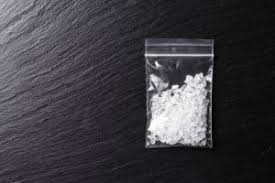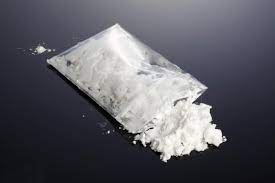Uncategorized
Exploring MDPV: Understanding Methylenedioxypyrovalerone, Its Meaning, and Its Effects
Introduction
Methylenedioxypyrovalerone, commonly known as MDPV, is a synthetic stimulant that has garnered significant attention in recent years. This substance, often associated with the term “bath salts,” has been a topic of concern due to its potent effects and potential for abuse. In this comprehensive blog post, we will delve into the details of MDPV, exploring what it is, its meaning, its chemical properties, its effects, and the reasons behind its notoriety.
What is MDPV?
MDPV Meaning
MDPV stands for Methylenedioxypyrovalerone. It is a synthetic cathinone, a class of drugs that are chemically similar to naturally occurring cathinone compounds found in the khat plant. Synthetic cathinones are known for their stimulant effects, which can be compared to those of amphetamines and cocaine. MDPV is specifically designed to produce powerful central nervous system stimulation, leading to increased alertness, euphoria, and heightened energy levels.
Chemical Structure and Properties
MDPV’s chemical structure consists of a pyrovalerone backbone with a methylenedioxy group attached to it. The full chemical name of MDPV is 3,4-methylenedioxypyrovalerone. This structure is responsible for its potent psychoactive effects. MDPV is typically found as a white or off-white powder, which can be ingested, snorted, smoked, or injected.
The synthesis of MDPV involves the use of various precursor chemicals and reagents, making it a challenging substance to produce. Its chemical structure is as follows:
- Chemical Formula: C16H21NO3
- Molecular Weight: 275.35 g/mol
Historical Background of MDPV
Origin and Development
MDPV was first synthesized in the 1960s by a team of researchers led by Bo Holmstedt and E. Szára. Initially, it was developed as a potential medication for conditions such as chronic fatigue and depression. However, its stimulant properties and potential for abuse led to a shift in its intended use.
Emergence in the Recreational Drug Market
MDPV began to gain popularity in the early 2000s as a recreational drug. It was often sold under the guise of “bath salts” or “plant food,” marketed as a legal alternative to illicit stimulants like cocaine and methamphetamine. Its availability in head shops, online marketplaces, and convenience stores contributed to its widespread use.
Legal Status and Regulation
Due to its high potential for abuse and adverse health effects, MDPV has been classified as a Schedule I controlled substance in many countries, including the United States. This classification indicates that MDPV has no accepted medical use and a high potential for abuse. Regulatory efforts have been implemented to curb its distribution and use, but its presence in the illicit drug market remains a concern.
Mechanism of Action
Interaction with Neurotransmitters
MDPV exerts its effects by interacting with neurotransmitter systems in the brain, primarily targeting dopamine and norepinephrine transporters. By inhibiting the reuptake of these neurotransmitters, MDPV increases their levels in the synaptic cleft, leading to enhanced stimulation of the central nervous system.
Dopaminergic Effects
The inhibition of dopamine reuptake is a key factor in MDPV’s euphoric and reinforcing effects. Elevated dopamine levels in the brain’s reward pathways contribute to feelings of pleasure and increased energy, which are characteristic of stimulant drugs.
Noradrenergic Effects
MDPV also affects norepinephrine levels, leading to increased arousal, alertness, and cardiovascular stimulation. These effects can result in elevated heart rate, increased blood pressure, and heightened alertness.
Effects of MDPV
Desired Effects
Users of MDPV often seek its stimulant effects, which can include:
- Euphoria: A heightened sense of pleasure and well-being.
- Increased Energy: Enhanced physical and mental energy levels.
- Alertness: Improved focus and concentration.
- Sociability: Increased sociability and talkativeness.
Adverse Effects
Despite its desired effects, MDPV is associated with a range of adverse effects, including:
- Anxiety and Paranoia: Intense feelings of anxiety and paranoia, often leading to panic attacks.
- Psychosis: Hallucinations, delusions, and other psychotic symptoms.
- Insomnia: Difficulty sleeping or maintaining a regular sleep pattern.
- Agitation: Restlessness and irritability.
- Cardiovascular Issues: Elevated heart rate, increased blood pressure, and risk of heart attack or stroke.
Long-Term Effects
Prolonged use of MDPV can lead to severe health consequences, including:
- Addiction: MDPV has a high potential for addiction, leading to compulsive drug-seeking behavior.
- Cognitive Impairment: Long-term use can result in memory problems, cognitive deficits, and impaired decision-making.
- Mental Health Disorders: Increased risk of developing anxiety, depression, and other mental health disorders.
- Physical Health Decline: Chronic use can lead to weight loss, malnutrition, and overall physical health deterioration.
The Rise of Bath Salts
What Are Bath Salts?
“Bath salts” is a term used to describe a group of synthetic cathinones, including MDPV, that are sold in a crystalline powder form. Despite their name, these substances are not intended for bathing. Instead, they are marketed as recreational drugs, often labeled as “not for human consumption” to circumvent legal restrictions.

Popularity and Media Attention
The rise of bath salts gained significant media attention in the early 2010s due to a series of high-profile incidents involving violent and erratic behavior attributed to their use. These incidents, often sensationalized in the media, highlighted the dangers associated with bath salts and contributed to public awareness of MDPV and similar substances.
Legal and Regulatory Response
In response to the growing concern over bath salts, many countries implemented emergency bans and regulations to restrict their sale and distribution. In the United States, the Synthetic Drug Abuse Prevention Act of 2012 classified MDPV and other synthetic cathinones as Schedule I controlled substances, making their possession, distribution, and manufacture illegal.
Case Studies and Incidents
Notable Incidents
Several high-profile incidents involving MDPV have underscored its dangers. One of the most widely reported cases occurred in 2012, when a man in Florida attacked a homeless individual while under the influence of MDPV, exhibiting extreme aggression and violent behavior. This incident, often referred to as the “Miami Zombie” case, brought national attention to the dangers of bath salts.
Health and Safety Risks
The use of MDPV poses significant health and safety risks, both to the individual user and to the public. The unpredictable nature of its effects, combined with the potential for severe mental health disturbances, makes it a particularly dangerous substance.
Emergency Room Visits and Toxicity
MDPV use has been associated with a substantial increase in emergency room visits due to acute toxicity. Symptoms of MDPV toxicity can include severe agitation, hyperthermia, seizures, and cardiovascular collapse. Medical professionals often face challenges in managing these cases due to the rapid onset and intensity of symptoms.
Understanding the Appeal
Why Do People Use MDPV?
Despite the known risks, some individuals are drawn to MDPV for its powerful stimulant effects. The desire for increased energy, euphoria, and sociability can drive people to experiment with this substance, especially in social or party settings.
Misleading Marketing and Accessibility
The marketing of MDPV as “bath salts” or “plant food” has contributed to misconceptions about its safety. These products are often sold in attractive packaging, with misleading labels suggesting they are safe for use. Additionally, the ease of access through online marketplaces and retail stores has made MDPV readily available to a wide audience.
Peer Influence and Curiosity
Peer influence and curiosity play significant roles in the initiation of MDPV use. Social circles that condone or encourage drug use can pressure individuals to try MDPV, while the desire to experience its effects firsthand can lead to experimentation.
Treatment and Recovery
Addressing MDPV Addiction
Treating MDPV addiction requires a comprehensive approach that addresses both the physical and psychological aspects of dependence. Detoxification, behavioral therapy, and counseling are essential components of a successful treatment plan.

Detoxification and Medical Management
Detoxification involves the gradual removal of MDPV from the body while managing withdrawal symptoms. Medical supervision is crucial during this process to ensure the safety and well-being of the individual.
Behavioral Therapy and Counseling
Behavioral therapy and counseling aim to address the underlying psychological factors contributing to MDPV addiction. Cognitive-behavioral therapy (CBT) is commonly used to help individuals develop coping strategies, manage cravings, and prevent relapse.
Support Groups and Aftercare
Support groups, such as Narcotics Anonymous (NA), provide a valuable source of peer support and encouragement during the recovery process. Aftercare programs, including continued therapy and monitoring, help individuals maintain their sobriety and prevent relapse.
Conclusion
Methylenedioxypyrovalerone (MDPV) is a potent synthetic stimulant that has gained notoriety for its powerful effects and potential for abuse. As a member of the synthetic cathinone class, MDPV exerts its influence by targeting dopamine and norepinephrine transporters in the brain, leading to increased levels of these neurotransmitters. While some seek MDPV for its stimulant properties, the substance carries significant risks, including addiction, mental health disturbances, and physical health decline.
The rise of bath salts, which often contain MDPV, has highlighted the dangers associated with synthetic cathinones and spurred legal and regulatory action to
